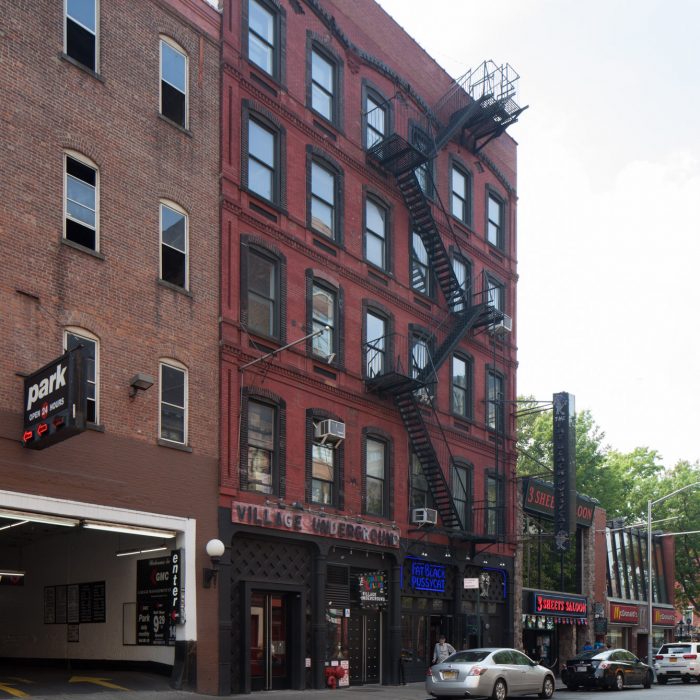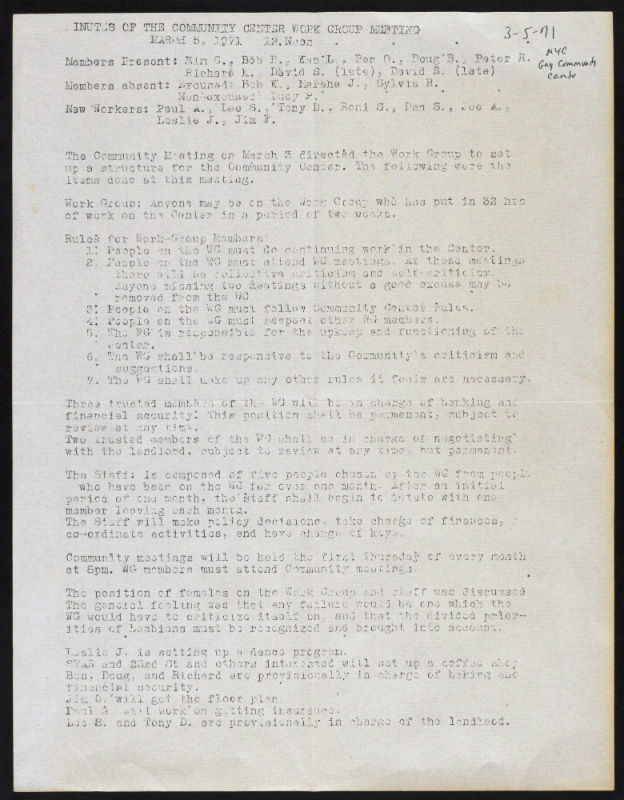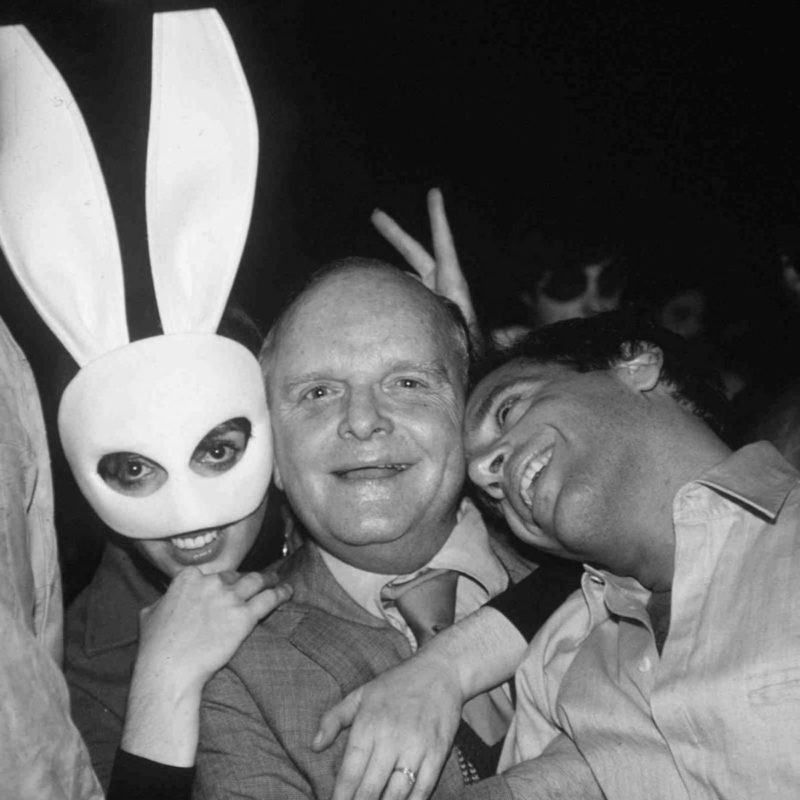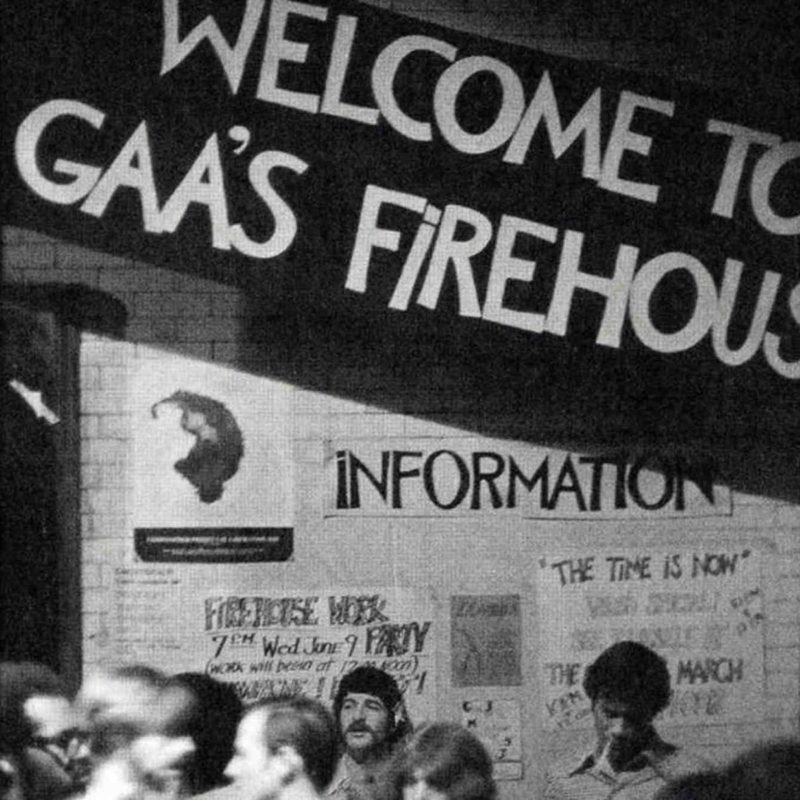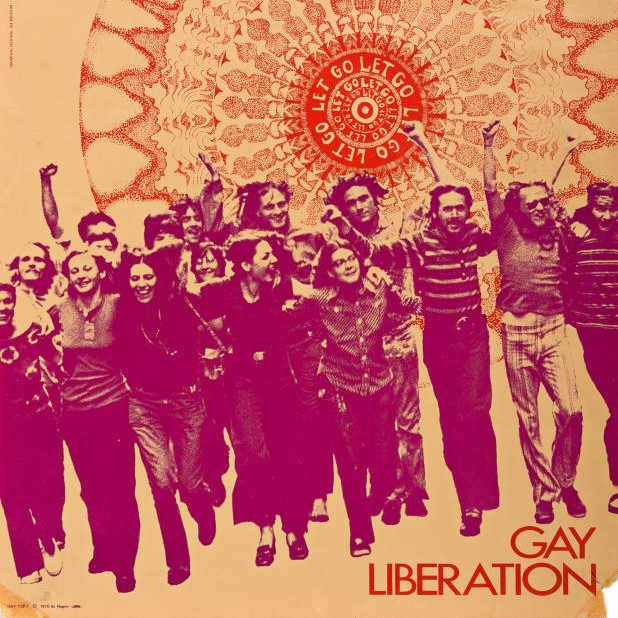overview
Tony Pastor’s Downtown, in business from 1939 to 1967, had a mixed clientele of lesbians and tourists, and some gay men. It had shows of female impersonators (a term used at the time) on Sundays.
The New York State Liquor Authority revoked its liquor license in 1967. In 1970-71, this was the location of the utopian Gay Community Center, started by the Gay Liberation Front and Street Transvestite Action Revolutionaries.
History
Tony Pastor’s Downtown
From the 1920s, and particularly in the 1930s and after World War II, the area of Greenwich Village south of Washington Square continued as the location of many bars and clubs that catered to, welcomed, or merely tolerated, the LGBT community. Reflecting the not wholly hospitable climate of the post-war period, even in this neighborhood, many of these bars (largely lesbian) were located in the shadow of the elevated train that ran along West 3rd Street.
Tony Pastor’s Downtown, in business from 1939 to 1967, had a mixed clientele of lesbians and tourists, and some gay men. It had shows of female impersonators (a term used at the time) on Sundays. Raided on morals charges in 1944 for permitting lesbians to “loiter” on the premises, Pastor’s survived apparently with mob backing. The New York State Liquor Authority, however, revoked its liquor license in 1967 because, in the homophobic language of the agency,
[The bar had] become disorderly in that it permitted homosexuals, degenerates and undesirables to be on the license premises and conduct themselves in an offensive and indecent manner.
Gay Community Center
In the immediate aftermath of Stonewall, the earliest LGBT activist organization founded in July 1969 was the Gay Liberation Front (GLF). Another, formed in Fall 1970, was the Street Transvestite Action Revolutionaries (STAR). Though of brief duration (December 1970-1971), the utopian Gay Community Center, started by these two groups, was located on the second floor of this building.
A Candlelight March, billed as a “Gay Community Celebration of Life and Love,” was held on Christmas Eve, December 24, 1970. A crowd of around 200 people assembled at Christopher Park at 8:30 p.m. and marched behind a banner to the new Gay Community Center, apparently for its opening. A “communal fest” featured food that people brought to share.
This served as an LGBT social center, with such activities as classes and discussion groups. GLF held Sunday meetings and dances here, which were formerly at the Church of the Holy Apostles and Alternate U. This was also the headquarters of Radicalesbians, spun off from the male-dominated GLF in 1970, and the meeting place of Gay Youth, for GLF members under the age of 21.
A theft of funds forced the Center to close in 1971.
Entry by Jay Shockley, project director (March 2017).
NOTE: Names above in bold indicate LGBT people.
Building Information
- Architect or Builder: Joseph M. Dunn
- Year Built: 1874-75
Sources
“Christmas Candlelight Procession,” DOB Newsletter, December 1970, 1.
“Community Center Collective Opens Large Village Loft,” GAY, January 18, 1971.
Daniel Hurewitz, Stepping Out: Nine Walks Through New York City’s Gay and Lesbian Past (New York: Henry Holt & Co., 1997).
“Gay Community Celebration of Life & Love” notice, Come Out!, December 1970-January 1971.
Jay Shockley, “The Lesbian, Gay, Bisexual and Transgender (LGBT) Community’s Presence in the South Village,” South Village Historic District Designation Report (New York: Landmarks Preservation Commission, 2013).
“Liquor License is Revoked at Tony Pastor’s Night Spot,” The New York Times, March 18, 1967, p. 15.
Richard C. Wandel, “200 March in Candlelight Parade,” GAY, February 1, 1971, 1, 3.
Stephan Cohen, The Gay Liberation Youth Movement in New York: “An Army of Lovers Cannot Fail” (New York: Routledge, 2008).
Do you have more information about this site?
This project is enriched by your participation! Do you have your own images of this site? Or a story to share? Would you like to suggest a different historic site?
